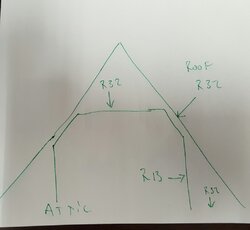Good morning all!
So I recently installed my Pacific Energy Vista, I'm burning cut up pallets for now. Mostly 4x4 fir as my "logs" I get a nice coalbed going and then stack 4 of the 4x4s nice and tight together to try and make one big log if you will. This is after the stove is nice and warmed up. Usually about 30 minutes after I get the fire lit. I've read a bunch of forums on here and can't really find an answer to my question.
Basically the stove just doesn't put out enough heat to keep the house warm. My house is 1300 sq ft in all and the living room it's in is 16' x 15' which is the primary location we want warm. Granted the kitchen is connected to this room with a wide open window into the living room and a large walkthrough. So in reality the space the stove heating is more like 15' x 26' 3 - 4 hours after burning and the place is only 50 degrees or so. The people at the stove store said this would easily heat a house of 1500 sq ft so we figured it was the right choice for us, knowing we really only needed to heat the living room / kitchen.
The fire rolls along great, I have a nice secondary burn going, i'd say it's a bit more lively than a "lazy" flame, but I'm not over firing. I just don't get it, every wood stove I've ever used just makes the place toasty and warm. Any thoughts would be appreciated.
So I recently installed my Pacific Energy Vista, I'm burning cut up pallets for now. Mostly 4x4 fir as my "logs" I get a nice coalbed going and then stack 4 of the 4x4s nice and tight together to try and make one big log if you will. This is after the stove is nice and warmed up. Usually about 30 minutes after I get the fire lit. I've read a bunch of forums on here and can't really find an answer to my question.
Basically the stove just doesn't put out enough heat to keep the house warm. My house is 1300 sq ft in all and the living room it's in is 16' x 15' which is the primary location we want warm. Granted the kitchen is connected to this room with a wide open window into the living room and a large walkthrough. So in reality the space the stove heating is more like 15' x 26' 3 - 4 hours after burning and the place is only 50 degrees or so. The people at the stove store said this would easily heat a house of 1500 sq ft so we figured it was the right choice for us, knowing we really only needed to heat the living room / kitchen.
The fire rolls along great, I have a nice secondary burn going, i'd say it's a bit more lively than a "lazy" flame, but I'm not over firing. I just don't get it, every wood stove I've ever used just makes the place toasty and warm. Any thoughts would be appreciated.




 we'll get there even if it takes a while.)
we'll get there even if it takes a while.)